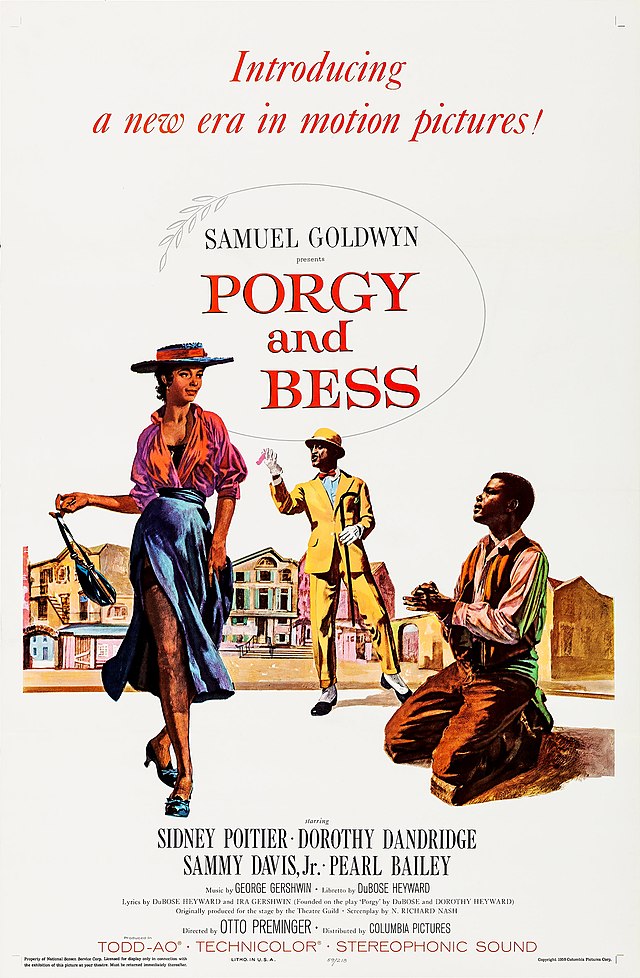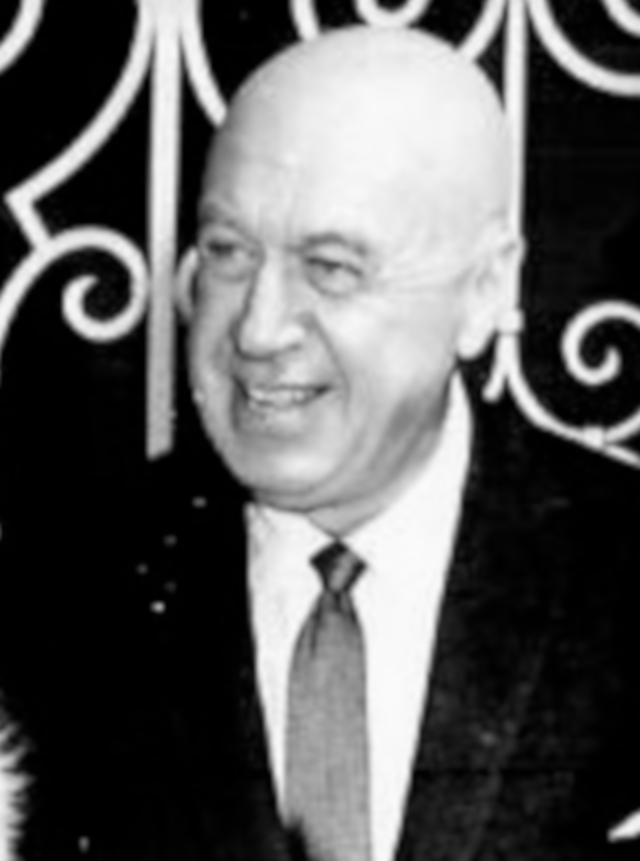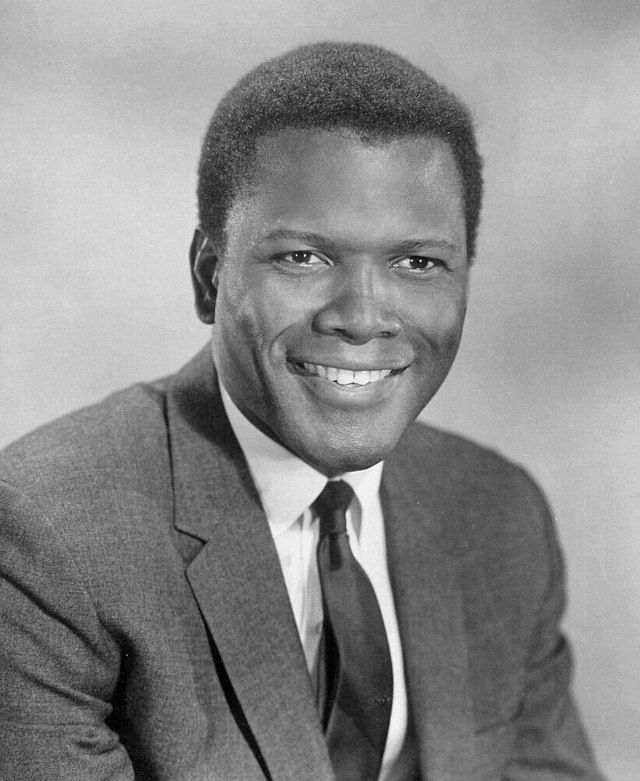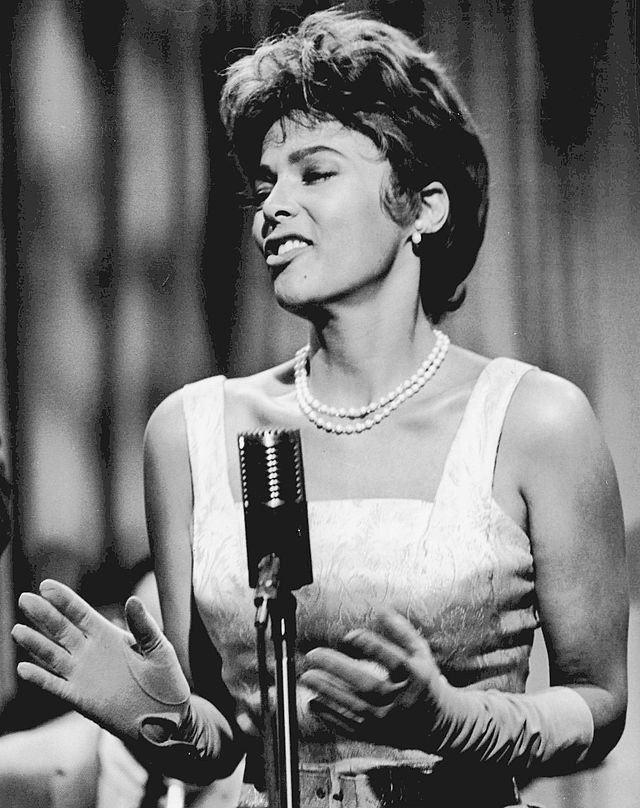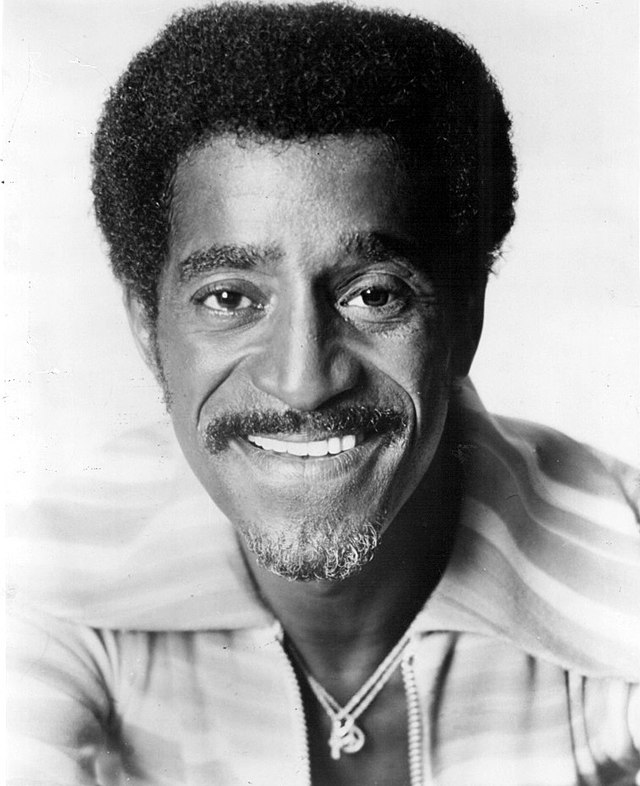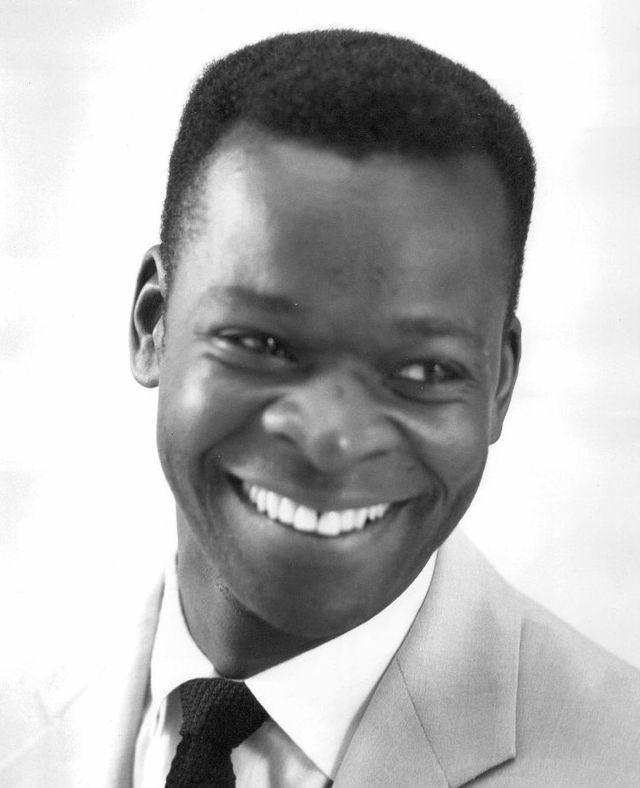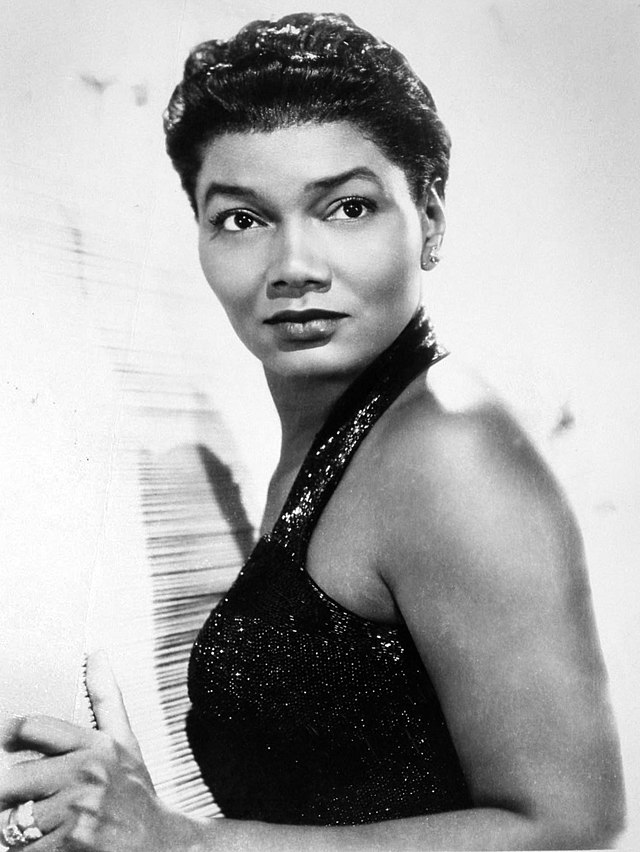Porgy and Bess - 1959
back| Released by | Columbia Pictures |
| Director | Otto Preminger |
| Producer | Samuel Goldwyn |
| Script | Based on the opera Porgy and Bess by George Gershwin (music), Ira Gershwin and DuBose Heyward (lyrics), with a screenplay adaptation by N. Richard Nash. |
| Cinematography | Leon Shamroy |
| Music by | George Gershwin (original opera music), Ira Gershwin (lyrics), DuBose Heyward (lyrics), with musical direction by André Previn. |
| Running time | 144 minutes |
| Film budget | $7 million |
| Box office sales | The film's box office performance was modest, and specific figures are not readily available. |
| Main cast | Sidney Poitier - Dorothy Dandridge - Sammy Davis Jr. - Pearl Bailey - Brock Peters - Diahann Carroll |
Porgy and Bess
A Poignant Tale of Love and Redemption in a Close-Knit African-American Community
Porgy and Bess is notable for its adaptation of the famous Gershwin opera into a film format, blending music and drama to tell the story of the disabled beggar Porgy and his turbulent relationship with Bess in the African-American community of Catfish Row.
Despite the high-profile cast and significant budget, the film faced challenges related to racial issues, distribution, and the preservation of the original musical's integrity.
Related
Porgy and Bess – 1959
Summary and Analysis
Setting and Premise: Porgy and Bess is set in the fictional Catfish Row, a poor, predominantly African-American neighborhood in Charleston, South Carolina, during the early 20th century. The story revolves around the lives of its residents, focusing particularly on the tragic romance between a disabled beggar, Porgy, and a troubled woman, Bess.
Plot Summary:
- Introduction: The film opens with the community going about their daily lives. Clara, a resident of Catfish Row, sings a lullaby ("Summertime") to her baby, symbolizing the hope and struggles of the people living there. We are introduced to Porgy, a kind-hearted but disabled beggar who navigates the streets with the aid of a goat-drawn cart.
- Conflict Begins: Crown, a strong and violent laborer, and his girlfriend Bess, a beautiful but troubled woman with a past marred by drugs and abuse, enter the scene. At a dice game, Crown, in a drunken rage, kills a man named Robbins. Fearing arrest, Crown flees, leaving Bess to fend for herself. Shunned by the community and vulnerable, Bess seeks refuge. Sportin' Life, a slick, fast-talking drug dealer, tempts Bess with drugs and the promise of a glamorous life in New York, but she resists him.
- Porgy's Compassion: Porgy, observing Bess's plight, takes her in. Despite his physical limitations, he shows her kindness and love, something Bess has rarely experienced. Gradually, a romantic relationship develops between the two. Porgy’s love provides Bess with a sense of stability and safety she has never known before, and she begins to change for the better.
- The Threat of Crown: Crown's presence continues to loom over their happiness. During a community picnic on Kittiwah Island, Crown reappears, demanding Bess return to him. Frightened and conflicted, Bess succumbs to his forceful personality and spends the night with him. However, her feelings for Porgy make her return to Catfish Row the next day.
- Sportin' Life's Influence: While Bess is vulnerable, Sportin' Life once again tries to seduce her with visions of a different life, using drugs to weaken her resolve. He sings "It Ain't Necessarily So," challenging the beliefs of the community and luring Bess with his cynicism.
- The Climax: Crown eventually returns to Catfish Row to reclaim Bess. A confrontation occurs between him and Porgy. In a dramatic struggle, Porgy manages to kill Crown to protect Bess. This act solidifies Porgy’s deep love for Bess but also seals his fate.
- The Denouement: Following Crown’s death, the police arrive to investigate. They take Porgy in for questioning. While Porgy is held by the authorities, Sportin' Life seizes the opportunity to convince Bess that Porgy will be imprisoned. He offers her drugs and persuades her to leave for New York with him.
- Conclusion: When Porgy returns to Catfish Row, he discovers that Bess has gone. Heartbroken but determined, he decides to go after her, despite his disability. The film ends with Porgy embarking on his journey, symbolizing both his love and the tragic uncertainty of his future.
Analysis:
Themes:
- Love and Redemption: The relationship between Porgy and Bess is at the heart of the film. Porgy's unconditional love and compassion represent a redemptive force for Bess, offering her a chance to escape her troubled past. Their relationship demonstrates the transformative power of love, even in the face of overwhelming societal and personal obstacles.
- Racism and Marginalization: Porgy and Bess portrays the struggles of African-American communities during the early 20th century. The characters are confined to a marginalized space (Catfish Row), facing poverty, violence, and limited opportunities. The film, though criticized for its depiction of stereotypes, also highlights the resilience and strength of these communities.
- Good vs. Evil: The characters of Crown and Sportin' Life represent forces of evil and temptation, constantly pulling Bess away from the good represented by Porgy and the supportive community of Catfish Row. The struggle between these opposing forces drives the narrative, reflecting broader societal issues.
- Freedom and Entrapment: The film explores themes of freedom and entrapment, both physical and emotional. Porgy's disability physically limits him, yet he finds emotional freedom through love. Bess, though physically able, is trapped by her past addictions and abusive relationships, struggling to find true freedom.
Visual and Musical Style:
- Visual Style: Otto Preminger's direction, combined with Leon Shamroy's cinematography, brings a vivid and atmospheric portrayal of Catfish Row. The film uses rich, Technicolor visuals to contrast the vibrancy of the community's life with the darker elements of poverty and crime. The visual composition often emphasizes the confinement of the characters, using narrow alleyways and cramped spaces to reflect their limited social mobility.
- Musical Influence: George Gershwin's iconic music is a driving force of the film, blending classical and jazz influences to create an emotional and narrative backdrop. Songs like "Summertime," "Bess, You Is My Woman Now," and "It Ain't Necessarily So" are not only musical highlights but also serve to advance character development and plot. André Previn's musical direction ensures that the opera’s essence is retained while making it accessible to film audiences.
Cultural Impact and Legacy:
Porgy and Bess was both a groundbreaking and controversial film. Its portrayal of African-American characters, played by an all-black cast, was a significant step in Hollywood at a time when such representation was rare. However, the film also faced criticism for perpetuating racial stereotypes and for the portrayal of its characters in ways that some felt reinforced negative perceptions.
The film's release was marred by legal disputes and limited availability, leading to it being rarely seen in later years. Nonetheless, its impact on musical cinema and its role in the careers of its stars, such as Sidney Poitier and Dorothy Dandridge, remains significant. The film is remembered for its ambitious attempt to bring a landmark American opera to the big screen and for its exploration of complex social themes through music and storytelling.
Conclusion:
Porgy and Bess is a film that combines rich musical heritage with powerful drama, offering insights into love, redemption, and the human condition. While it has faced criticism for its depiction of race and has been somewhat forgotten due to distribution issues, its artistic achievements and the performances of its cast continue to resonate. The film stands as a testament to the enduring power of George Gershwin's music and the complex narrative of the characters it portrays.
Porgy and Bess Premiere 1959
Full Cast:
Main Cast:
- Sidney Poitier as Porgy
- Dorothy Dandridge as Bess
- Sammy Davis Jr. as Sportin' Life
- Pearl Bailey as Maria
- Brock Peters as Crown
- Diahann Carroll as Clara
- Ruth Attaway as Serena Robbins
- Claude Akins as Detective
Supporting Cast:
- Leslie Scott as Jake
- Everdinne Wilson as Annie
- Joel Fluellen as Mingo
- Clarence Muse as Peter
- Earle Hyman as Frazier
- John William Sublett (also known as John W. Bubbles) as Lily
- Myrna Hansen as Blond Woman
Other Cast Members:
- Isabel Cooley as Lily's Friend
- Georgette Harvey as The Strawberry Woman
- Barrett Rhoden as Undertaker
- Wally Goodman as Lawyer
- William Warfield as Chorus Singer (uncredited)
- Alice Ghostley as White Woman (uncredited)
Notable Mentions:
- Although William Warfield is uncredited, he provided the singing voice for Porgy, dubbing Sidney Poitier's singing parts.
- Adele Addison provided the singing voice for Bess, dubbing Dorothy Dandridge's singing parts.
- Cab Calloway was initially considered for the role of Sportin' Life but was replaced by Sammy Davis Jr.
Otto Preminger’s Direction
Otto Preminger's direction in the 1959 film Porgy and Bess showcases his distinctive cinematic style and his approach to adapting a complex and beloved opera for the screen. Below is an analysis of his direction, focusing on his choices in storytelling, visual style, handling of themes, and his overall influence on the film's production.
Vision and Adaptation:
Otto Preminger approached Porgy and Bess with a vision to transform George Gershwin's opera into a compelling and accessible film. He aimed to retain the emotional intensity and musical richness of the original while making it visually dynamic and narratively cohesive for the big screen. Preminger's direction reflects his respect for the source material and his understanding of its cultural significance, yet he also sought to imprint his style onto the film.
Realism and Grit:
Preminger is known for his commitment to realism, and this is evident in Porgy and Bess. He grounded the story in a tangible sense of place, focusing on the texture and atmosphere of Catfish Row. The setting is depicted not as a mere backdrop but as a living, breathing entity that shapes the characters' lives. By emphasizing the harsh realities of poverty and the vibrancy of community life, Preminger brought authenticity to the film, making it more than just a musical spectacle.
Visual Style and Composition:
Preminger’s use of Technicolor in Porgy and Bess is noteworthy. He employed rich, vibrant colors to enhance the emotional depth of the narrative. His collaboration with cinematographer Leon Shamroy led to a visually striking film, where the play of light and shadow underscored the mood of various scenes. Preminger used wide-angle shots and long takes to capture the ensemble scenes, providing a sense of continuity and fluidity. This choice allowed the audience to experience the musical numbers more organically, as if they were part of the community's daily life.
The director’s camera work often reflects the emotional states of the characters. For instance, intimate close-ups of Porgy and Bess reveal their internal struggles and burgeoning love, while wide shots are used to depict the communal dynamics of Catfish Row. This careful framing highlights the isolation and vulnerability of certain characters, contrasting with the scenes of community solidarity.
Handling of Themes:
Preminger’s direction is marked by his ability to weave together the film’s major themes: love, redemption, racial tensions, and social inequality. He explored these themes with a level of subtlety and nuance, steering away from overt preachiness. By focusing on the individual stories within the community, Preminger highlighted the broader social issues without losing the personal connection with the audience. His approach to these themes was bold for the time, especially considering the racial dynamics and the socio-political environment of the late 1950s.
Character Development and Performances:
Preminger's work with the cast was instrumental in shaping the film’s emotional impact. He managed to draw powerful performances from his actors, particularly Sidney Poitier and Dorothy Dandridge. Preminger’s direction ensured that Porgy was portrayed not just as a pitiable figure but as a man of dignity and strength, capable of deep love and sacrifice. Bess, under Preminger's guidance, became a more complex and sympathetic character, struggling with her past and yearning for a better future.
His handling of the secondary characters also added depth to the narrative. Pearl Bailey’s Maria and Sammy Davis Jr.’s Sportin' Life were given enough space to develop their roles, contributing to the film’s portrayal of community life and the various influences on Bess’s decisions.
Integration of Music and Narrative:
One of the greatest challenges in directing Porgy and Bess was integrating the operatic elements seamlessly into the film’s narrative. Preminger managed to maintain the integrity of Gershwin’s music while ensuring that it advanced the plot and developed the characters. The musical numbers are not mere interruptions; they are essential components of the storytelling, reflecting the emotions and conflicts of the characters. Preminger’s direction made the music an organic part of the film’s fabric, achieving a harmonious blend of drama and musicality.
Controversies and Challenges:
Preminger’s direction of Porgy and Bess was not without controversy. His decision to cast Sidney Poitier and Dorothy Dandridge, both significant figures in the struggle for African-American representation in Hollywood, was a progressive move. However, the film faced criticism for its portrayal of African-American life and its reinforcement of certain stereotypes, which some critics argued undermined its progressive intentions. Preminger’s insistence on realism sometimes clashed with the expectations of both audiences and critics who were familiar with the opera’s more stylized presentation.
The production itself was fraught with challenges, including disputes with the cast and crew, legal issues, and disagreements over the final cut. Despite these obstacles, Preminger's authoritative style and determination ensured that the film was completed to his vision.
Legacy and Impact:
Otto Preminger's direction of Porgy and Bess left a lasting impact on how musical dramas could be adapted for the screen. His commitment to realism, coupled with his ability to handle complex themes and emotions, set a standard for future adaptations of stage works. While the film faced mixed reviews upon release and has had limited availability in later years, it remains a notable example of Preminger’s skill as a director and his ability to tackle challenging material.
In conclusion, Otto Preminger’s direction of Porgy and Bess is a testament to his versatility and vision as a filmmaker. By combining his distinct directorial style with a respect for the original opera, he created a film that is both a celebration of George Gershwin’s music and a poignant exploration of the human condition. Despite its controversies, Porgy and Bess stands as a significant piece in Preminger’s filmography and in the history of American cinema.
Sidney Poitier's Performance in Porgy and Bess
idney Poitier's performance in the 1959 film Porgy and Bess is a compelling portrayal that highlights his exceptional acting abilities and his capacity to bring depth and humanity to his characters. Below is an analysis of his performance as Porgy, focusing on his approach to the role, the emotional and physical demands of the character, and his overall impact on the film.
The Challenge of the Role:
Playing Porgy in Porgy and Bess presented a unique set of challenges for Sidney Poitier. Porgy is a character defined by his physical disability, emotional vulnerability, and deep sense of dignity. Portraying a disabled character without falling into caricature or pity required a nuanced and empathetic performance. Poitier had to balance Porgy's physical limitations with his inner strength and compassion, making him a fully realized and relatable figure.
Additionally, Poitier was tasked with bringing to life a character originally conceived for the operatic stage, which meant he needed to translate the larger-than-life qualities of Porgy into a more naturalistic and intimate cinematic form. This required a careful modulation of his performance to suit the screen's demands, maintaining the emotional intensity of the opera while ensuring authenticity and believability.
Physicality and Presence:
Poitier's portrayal of Porgy is characterized by his attention to physical detail. He embodied Porgy's disability through his movement and posture, using a goat-drawn cart for mobility and emphasizing the character's struggle with simple tasks. Poitier's physical performance conveys both the limitations imposed by Porgy's disability and the character's resilience. His deliberate, careful movements, combined with subtle expressions of pain or effort, make Porgy's daily existence a palpable reality for the audience.
Despite his physical limitations, Poitier imbues Porgy with a quiet but undeniable presence. His portrayal emphasizes Porgy’s inner strength, showing that his disability does not define him. Through Poitier’s performance, Porgy emerges as a figure of quiet dignity and moral fortitude, capable of great love and sacrifice.
Emotional Depth and Vulnerability:
One of the most striking aspects of Poitier's performance is his ability to convey Porgy's emotional depth. Poitier portrays Porgy as a man of profound feelings, capable of deep compassion and love. His interactions with Bess, played by Dorothy Dandridge, are tender and heartfelt. Poitier’s eyes and facial expressions often communicate more than dialogue could, revealing Porgy’s love, hope, and occasional despair.
In moments of intimacy, Poitier's portrayal is gentle and caring, showing Porgy’s unconditional love for Bess. This emotional vulnerability is particularly evident in scenes where Porgy contemplates his feelings for Bess and the possibility of a life together. Poitier's performance captures the essence of a man who, despite his circumstances, dares to hope for a better future.
Relationship with Bess:
Poitier's chemistry with Dorothy Dandridge is a cornerstone of the film. Their relationship is central to the narrative, and Poitier skillfully brings out the complexities of Porgy's love for Bess. He portrays Porgy’s love as both protective and patient, understanding Bess’s troubled past and accepting her without judgment.
The contrast between Porgy's gentle, steadfast love and the more violent, possessive love of Crown, played by Brock Peters, highlights Poitier's ability to convey Porgy’s moral superiority and genuine affection. Through Poitier's nuanced performance, the audience sees why Bess is drawn to Porgy’s kindness and why his love offers her a chance at redemption.
Strength and Conflict:
While Porgy is a character of kindness and gentleness, Poitier also brings out his strength and resolve, especially when his love for Bess is threatened. In the climactic confrontation with Crown, Poitier’s performance shifts to show Porgy’s capacity for violence when driven to protect what he loves. This transformation is both believable and impactful, demonstrating Porgy's inner strength and the lengths he will go to defend Bess.
Poitier effectively conveys Porgy's internal conflict: the struggle between his desire for peace and the need to act against violence and oppression. This duality adds complexity to Porgy's character, making him more than a passive figure and showcasing Poitier’s ability to navigate the emotional and moral intricacies of his role.
Dignity and Humanity:
Throughout the film, Poitier’s performance is marked by a profound sense of dignity and humanity. He portrays Porgy as a man who, despite his hardships, retains his integrity and sense of self-worth. Poitier’s Porgy is not a figure of pity but of respect, embodying the resilience of the human spirit.
His portrayal emphasizes the universal themes of love, acceptance, and the desire for a better life. By giving Porgy these qualities, Poitier not only makes him a relatable and sympathetic character but also elevates the film’s narrative, highlighting the broader social and racial issues underlying the story.
Impact and Legacy:
Sidney Poitier’s performance in Porgy and Bess is a testament to his skill as an actor and his commitment to portraying African-American characters with depth and dignity. His portrayal of Porgy contributed to the film’s impact and helped shape its legacy as a significant work in American cinema.
Despite the film’s mixed reception and subsequent limited availability, Poitier’s performance remains a highlight, showcasing his ability to bring complex, multifaceted characters to life. His work in Porgy and Bess laid the groundwork for his later roles, where he would continue to challenge stereotypes and push for more meaningful representation in Hollywood.
Sidney Poitier’s performance as Porgy in Porgy and Bess is a masterclass in subtlety, depth, and emotional resonance. He brought to life a character who is at once vulnerable and strong, loving and protective, embodying the dualities that make Porgy a compelling figure. Through his portrayal, Poitier not only honored the character created by Gershwin but also elevated him, making Porgy a symbol of resilience and the power of love. His performance remains a powerful example of his artistry and his commitment to redefining African-American roles in cinema.
Memorable Film Lines:
Porgy to Bess:
- "Bess, you is my woman now. You is, you is! And you must laugh and sing and dance for two instead of one."
Context and Significance: This line is from the famous duet “Bess, You Is My Woman Now,” where Porgy expresses his deep love and commitment to Bess. It signifies Porgy's protective and nurturing nature, his desire to take care of Bess, and his hope for a future together. This quote encapsulates the central love story of the film and the theme of redemption through love.
Bess to Porgy:
- "I want to stay here, but I ain't worthy, you understand? I'm a woman that can't stand on her own two feet."
Context and Significance: Bess says this line to Porgy, reflecting her internal struggle and feelings of unworthiness. This quote highlights Bess’s self-doubt and fear of not being able to escape her past. It underscores one of the film’s key themes: the battle between self-destruction and the desire for a better life.
Sportin' Life:
- "It ain't necessarily so. The things that you're liable to read in the Bible, it ain't necessarily so."
Context and Significance: This line is from the song "It Ain't Necessarily So," sung by Sportin' Life. In this number, Sportin' Life questions and mocks religious beliefs, representing temptation and cynicism. This quote captures his role as the antagonist who tries to lure Bess away from Porgy and the more stable life in Catfish Row, highlighting the conflict between faith and skepticism.
Maria to Sportin' Life:
- "Get your devil's food outta here, Sportin' Life. You ain't welcome in Catfish Row!"
Context and Significance: Maria, the community matriarch, says this to Sportin' Life, rejecting his influence and protecting the community from his corrupting presence. This quote demonstrates Maria's strength and the community's attempt to uphold their values against external threats.
Porgy about Bess:
- "I'm on my way, Bess. I’m on my way."
Context and Significance: This line is spoken by Porgy at the end of the film when he decides to leave Catfish Row to find Bess in New York. It signifies Porgy's determination and love, showing his willingness to overcome any obstacle to be with Bess. This quote encapsulates the hope and persistence that define Porgy’s character.
Crown to Bess:
- "You belong to me, Bess. You're mine, body and soul."
Context and Significance: Crown’s possessive and domineering nature is evident in this line. It illustrates the abusive and controlling aspect of Crown's relationship with Bess, contrasting sharply with Porgy's more caring and respectful love. This quote reflects the theme of entrapment and the struggle for freedom.
Serena Robbins:
- "Oh, Doctor Jesus, help me to heal this pain. Oh, my Jesus, bring him back to me again."
Context and Significance: This is part of Serena’s prayer song, which she sings after the death of her husband, Robbins. It reflects the deep faith of the community and the reliance on spirituality to cope with suffering and loss. This quote underscores the themes of faith, suffering, and the hope for divine intervention.
Porgy to the police:
- "No, sir. Porgy ain't scared of nothing. Not when he's got his Bess."
Context and Significance: Porgy’s response to the police shows his courage and how Bess gives him strength. This quote emphasizes the transformative power of love and how it empowers Porgy to stand up against fear and adversity.
Bess to Sportin' Life:
- "You're always promising big things, but all you got is poison in your hands."
Context and Significance: Bess says this to Sportin' Life, expressing her awareness of his deceitful nature. This quote highlights Bess’s struggle to resist the temptations that Sportin' Life represents, emphasizing the film's theme of the battle between good and evil influences.
Bess:
- "There's no peace for the wicked."
Context and Significance: This line reflects Bess's recognition of her past mistakes and her inner turmoil. It signifies the ongoing battle within her to find redemption and peace, a central theme in her character arc throughout the film.
Classic Scenes from Porgy and Bess:
"Summertime" Lullaby
- Description: The film opens with the iconic lullaby "Summertime," sung by Clara (played by Diahann Carroll). As Clara cradles her baby, she sings softly, projecting a sense of warmth and hope amid the harsh realities of life in Catfish Row.
- Significance: This scene sets the tone for the film, introducing the audience to the world of Catfish Row and its inhabitants. "Summertime" is one of the most recognizable songs from the opera and reflects the dual themes of beauty and struggle that run throughout the story. The serene, soothing quality of Clara’s voice against the backdrop of poverty serves as a poignant contrast, highlighting the resilience and dreams of the community.
Porgy and Bess's Love Duet: "Bess, You Is My Woman Now"
- Description: One of the most tender and intimate scenes in the film is the duet between Porgy (Sidney Poitier) and Bess (Dorothy Dandridge), where they sing "Bess, You Is My Woman Now." In this moment, Porgy expresses his deep love and commitment to Bess, while she, in turn, acknowledges her feelings for him.
- Significance: This duet is a turning point in the relationship between Porgy and Bess, marking the moment they declare their love for each other. It illustrates the theme of redemption through love, showing how Porgy’s affection provides Bess with a sense of stability and hope. The song's lyrical beauty and the chemistry between Poitier and Dandridge make this scene one of the emotional highlights of the film, capturing the essence of their characters' longing for a better life.
"I Got Plenty o' Nuttin'" – Porgy's Song of Contentment
- Description: Porgy sings "I Got Plenty o' Nuttin'," expressing his happiness and contentment with his simple life. In this scene, Porgy joyously moves around his small dwelling, celebrating his newfound happiness, especially after Bess comes into his life.
- Significance: This scene showcases Porgy's positive outlook and his ability to find joy in the little things, despite his physical disability and economic hardship. It is a cheerful and uplifting moment that contrasts with the darker aspects of the story. The song encapsulates Porgy's character—a man who values love and peace over material wealth, highlighting the themes of simplicity and inner fulfillment.
The Picnic on Kittiwah Island
- Description: The community of Catfish Row takes a break from their daily struggles to enjoy a picnic on Kittiwah Island. During this outing, the mood is festive, and several musical numbers take place, including "Oh, I Can't Sit Down" and "I Ain't Got No Shame."
- Significance: The picnic scene is significant because it provides a glimpse into the joyous and vibrant life of the community. It contrasts sharply with the otherwise somber tone of the film, showing the characters in a rare moment of happiness and freedom. The scene also sets the stage for the dramatic reappearance of Crown, which disrupts the harmony and pulls Bess back into a cycle of fear and conflict.
Sportin' Life's Temptation: "It Ain't Necessarily So"
- Description: Sportin' Life (Sammy Davis Jr.) performs "It Ain't Necessarily So," a lively and provocative song that questions religious beliefs and moral values. Using his charisma and wit, Sportin' Life tries to lure the residents of Catfish Row, and especially Bess, into a more carefree and morally ambiguous lifestyle.
- Significance: This scene is a showcase for Sammy Davis Jr.’s performance, highlighting his character’s role as a tempter and a disruptive force. The song is central to Sportin' Life’s character, reflecting his cynicism and his challenge to the community’s values. It introduces a moment of conflict by planting seeds of doubt and temptation, particularly in Bess, pulling her away from Porgy's protective love.
The Confrontation and Death of Crown
- Description: The dramatic confrontation between Porgy and Crown (Brock Peters) culminates in Crown's death. When Crown returns to claim Bess, Porgy, fueled by love and fear, confronts him. In a struggle that ensues, Porgy kills Crown to protect Bess and his newfound sense of security.
- Significance: This scene marks a critical turning point in the film, showing Porgy's willingness to go to great lengths to protect the woman he loves. It highlights the inner strength that Porgy possesses, despite his physical limitations. This moment of violence also propels the narrative towards its tragic conclusion, as it sets in motion the events that will lead to Porgy’s separation from Bess and the eventual disintegration of their fragile happiness.
Bess's Departure with Sportin' Life: "There's a Boat Dat's Leavin' Soon for New York"
- Description: In a moment of weakness and despair, Bess is seduced by Sportin' Life’s promises of a better life in New York. He sings "There's a Boat Dat's Leavin' Soon for New York," using the allure of a glamorous, carefree lifestyle to persuade her to leave Catfish Row and Porgy behind.
- Significance: This scene is pivotal as it captures the tragic pull of temptation on Bess. Her decision to leave with Sportin' Life signifies her struggle with her past demons and the difficulty of breaking free from them. It underscores the theme of entrapment versus freedom and the internal conflict Bess faces between the stability offered by Porgy and the chaotic allure of Sportin' Life’s world.
Porgy's Final Decision: "Oh Lawd, I'm On My Way"
- Description: The film’s closing scene features Porgy singing "Oh Lawd, I'm On My Way" as he decides to leave Catfish Row to search for Bess in New York. Despite his disability, Porgy is determined to find her, embodying hope and resolve.
- Significance: This scene is both heart-wrenching and inspiring. It captures Porgy's undying love for Bess and his hope against all odds. The song and the scene emphasize the themes of love, perseverance, and the relentless pursuit of happiness. Porgy’s journey symbolizes the human capacity to strive for love and fulfillment, no matter the obstacles.
Awards and Recognition for the Movie:
Academy Awards (Oscars)
Won:
Best Music, Scoring of a Musical Picture: André Previn and Ken Darby
- The film's score, adapted by André Previn from George Gershwin's original music, was recognized for its orchestral arrangements and effective integration of the opera’s music into the film.
Nominated:
Best Cinematography, Color: Leon Shamroy
- Leon Shamroy's work on the film was noted for its use of Technicolor to create a vibrant and atmospheric depiction of Catfish Row.
Best Costume Design, Color: Irene Sharaff
- The film's costumes, designed by Irene Sharaff, were nominated for their authenticity and contribution to the period setting and character portrayal.
Best Sound: Gordon Sawyer (Samuel Goldwyn SSD)
- The film's sound was recognized for its clarity and quality, especially important in a musical film where the integration of dialogue and music is crucial.
Best Film Editing: Louis R. Loeffler
- Louis R. Loeffler's editing was nominated for effectively pacing the musical sequences and dramatic scenes to maintain the film’s narrative flow.
Golden Globe Awards
Won:
Best Motion Picture – Musical or Comedy
- Porgy and Bess won the Golden Globe for Best Motion Picture in the Musical or Comedy category, highlighting its achievement in bringing a classic American opera to the big screen.
Nominated:
Best Actor in a Motion Picture – Musical or Comedy: Sidney Poitier
- Sidney Poitier received a nomination for his role as Porgy, recognizing his performance's emotional depth and authenticity.
Best Actress in a Motion Picture – Musical or Comedy: Dorothy Dandridge
- Dorothy Dandridge was nominated for her portrayal of Bess, acknowledging her ability to bring complexity and vulnerability to the character.
National Board of Review (NBR)
Won:
Top Ten Films
- Porgy and Bess was listed among the National Board of Review's Top Ten Films of the year, indicating its recognition as one of the notable cinematic achievements of 1959.
Grammy Awards
Won:
Best Soundtrack Album or Recording of Original Cast from a Motion Picture or Television: Porgy and Bess Soundtrack
- The film's soundtrack, featuring the adaptation of George Gershwin’s music, was recognized for its excellence in capturing the musical essence of the film.
Laurel Awards
Nominated:
Top Musical: Porgy and Bess
- The Laurel Awards, voted on by film exhibitors, nominated the film as one of the top musicals of the year
Songs from Porgy and Bess (1959):
- "Overture"
An instrumental piece that sets the tone for the film, featuring themes from various songs in the opera.
- "Summertime"
Sung by Clara (Diahann Carroll's character) to her baby. This lullaby is one of the most famous songs from the opera, symbolizing hope and the aspirations of the community.
- "A Woman Is a Sometime Thing"
Sung by Jake (Leslie Scott's character), Clara's husband. This song reflects Jake's views on women, contrasting the loving and nurturing Clara.
- "My Man's Gone Now"
Sung by Serena Robbins (Ruth Attaway's character) as she mourns the death of her husband, Robbins. It is a powerful, sorrowful lament.
- "Leavin' for the Promised Land"
Sung by Peter (Clarence Muse's character) and the ensemble. This spiritual song reflects the community’s faith and hopes for a better life.
- "It Take a Long Pull to Get There"
Sung by the fishermen, led by Jake. This song illustrates the hard, uncertain life of the fishermen of Catfish Row.
- "I Got Plenty o' Nuttin'"
Sung by Porgy (Sidney Poitier's character, with vocals dubbed by Robert McFerrin). This song expresses Porgy's contentment with his simple life, despite his poverty.
- "Bess, You Is My Woman Now"
A duet between Porgy and Bess (Dorothy Dandridge's character, with vocals dubbed by Adele Addison). It’s a love song that signifies Porgy's deep feelings for Bess and their commitment to each other.
- "Oh, I Can't Sit Down"
Sung by the ensemble as they prepare to leave for the picnic on Kittiwah Island. This lively, upbeat number reflects the community's joy and anticipation.
- "I Ain't Got No Shame"
Sung by the chorus during the Kittiwah Island picnic. It’s a spirited song celebrating freedom and a carefree life.
- "It Ain't Necessarily So"
Sung by Sportin' Life (Sammy Davis Jr.'s character). This song is one of the opera’s highlights, with Sportin' Life mocking biblical stories and expressing skepticism, showcasing his devil-may-care attitude.
- "What You Want with Bess?"
A confrontation between Crown (Brock Peters' character) and Bess. This song expresses Crown's possessiveness and Bess’s conflicted emotions.
- "Street Cries" (also known as "The Strawberry Woman" and "The Honey Man")
Sung by street vendors, including the Strawberry Woman (Georgette Harvey) and the Honey Man. These songs add to the atmosphere of Catfish Row and depict daily life.
- "I Loves You, Porgy"
Sung by Bess to Porgy. This tender love song is a declaration of Bess’s feelings for Porgy and her desire to stay with him.
- "A Red-Headed Woman"
Sung by Sportin' Life, teasing Bess. This song shows Sportin' Life’s meddling nature and his influence over Bess.
- "Clara, Clara"
A brief song by Jake, calling out to Clara, highlighting their relationship.
- "There's a Boat Dat's Leavin' Soon for New York"
Sung by Sportin' Life, attempting to lure Bess away from Porgy by promising a glamorous life in New York. It’s a seductive, persuasive number that showcases Sportin' Life’s manipulative character.
- "Oh Lawd, I'm On My Way"
Sung by Porgy at the end of the film. It’s a hopeful and determined song as Porgy sets off to find Bess, signifying his unyielding love and commitment.

